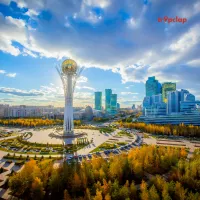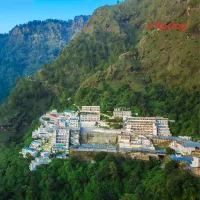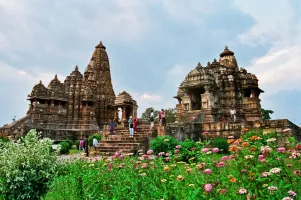Hemkund Sahib Gurdwara, History & trek of hemkund Sahib
Know in detail about the famous Gurudwara Hemkund Sahib, its history and trek of Hemkund Sahib. d.

About Hemkund Sahib
Gurdwara Sri Hemkund Sahib is a revered Sikh shrine located in the Chamoli district of Uttarakhand, India. It is situated at an altitude of approximately 4,632 meters (15,197 feet) above sea level in the Himalayan mountain range.
Hemkund Sahib is a combination of two words, 'Hem' meaning snow and 'Kund' meaning a small pond or lake. The Gurdwara is situated near the crystal-clear glacial lake, Hemkund, which is surrounded by seven mountain peaks, each adorned by a Nishan Sahib (Sikh flag).
The Gurdwara is dedicated to the tenth Sikh Guru, Guru Gobind Singh, who meditated at this site during his previous incarnation as a warrior-saint. The Gurdwara's architecture is unique, with white marble walls and a domed roof made of brass. The Gurdwara also houses a sacred Sikh scripture, the Guru Granth Sahib.
The Hemkund Sahib trek is a popular pilgrimage destination for Sikhs and other devotees who visit the shrine during the summer months.
The trek to Hemkund Sahib involves a challenging climb of over 6 kilometers (3.7 miles) through steep and rocky terrain. The trek is considered to be one of the most difficult treks in India but is also one of the most rewarding, with breathtaking views of the surrounding mountains and valleys.
The Gurdwara also serves langar, a community kitchen where free vegetarian meals are served to all visitors irrespective of their caste, creed, or religion. This is a unique feature of Sikhism, where the emphasis is on serving and sharing with others.
Overall, Hemkund Sahib is a beautiful and sacred pilgrimage site that is revered by Sikhs and other devotees.
History of Hemkund Sahib
The history of Hemkund Sahib dates back to the time of Guru Gobind Singh, the tenth Sikh Guru, who is believed to have meditated at the site during his previous incarnation as a warrior-saint.
According to Sikh tradition, Guru Gobind Singh visited the Himalayas to meditate and seek God's blessings. He is said to have encountered a group of sages, known as the "Rishis," who asked him for help in fighting against the demons who were terrorizing them. Guru Gobind Singh agreed to help and took on the form of a warrior-saint, also known as "Dusht Daman," meaning "the destroyer of evil."
Guru Gobind Singh is said to have fought a fierce battle against the demons at Hemkund, ultimately defeating them and restoring peace to the area. After the battle, Guru Gobind Singh is said to have meditated at the site, and it is believed that he achieved spiritual enlightenment.
The Gurdwara Sri Hemkund Sahib was established in the early 20th century by Sant Sohan Singh, a Sikh scholar and missionary. He discovered the site while on a pilgrimage to the nearby Sikh shrine of Sri Badrinath, and recognizing its historical and spiritual significance, he worked tirelessly to establish the Gurdwara and make it accessible to pilgrims.
Since its establishment, Hemkund Sahib has become a popular pilgrimage destination for Sikhs and other devotees, who visit the shrine to pay their respects to Guru Gobind Singh and to seek spiritual enlightenment. The Hemkund Sahib trek, which involves a challenging climb through steep and rocky terrain, is considered to be one of the most difficult but rewarding treks in India, attracting thousands of visitors each year.
Per Person
19,429
*EXCLUDING APPLICABLE TAXES 4.8 Ratings
( 95 Reviews )
( 95 Reviews )
Per Person
16,000
*EXCLUDING APPLICABLE TAXES 5.0 Ratings
( 157 Reviews )
( 157 Reviews )
Per Person
20,000
*EXCLUDING APPLICABLE TAXES 5.0 Ratings
( 157 Reviews )
( 157 Reviews )
Per Person
67,890
*EXCLUDING APPLICABLE TAXES 4.3 Ratings
( 218 Reviews )
( 218 Reviews )
Total
31,000
*EXCLUDING APPLICABLE TAXES 4.1 Ratings
( 56 Reviews )
( 56 Reviews )
Per Person
25,000
*EXCLUDING APPLICABLE TAXES 4.1 Ratings
( 56 Reviews )
( 56 Reviews )
Per Person
11,000
*EXCLUDING APPLICABLE TAXES 4.1 Ratings
( 56 Reviews )
( 56 Reviews )
Per Person
15,650
*EXCLUDING APPLICABLE TAXES 4.1 Ratings
( 56 Reviews )
( 56 Reviews )
Per Person
37,200
*EXCLUDING APPLICABLE TAXES 5.0 Ratings
( 21 Reviews )
( 21 Reviews )
Per Person
21,000
*EXCLUDING APPLICABLE TAXES 4.1 Ratings
( 56 Reviews )
( 56 Reviews )
Why visit Hemkund Sahib?
 View Gallery - 4
View Gallery - 4 Here are some reasons why you should consider visiting Hemkund Sahib:
Spiritual Significance: Hemkund Sahib is a significant pilgrimage site for Sikhs, who believe that Guru Gobind Singh, the tenth Sikh Guru, meditated at the lake in his previous life. The gurudwara at Hemkund Sahib is a beautiful example of Sikh architecture and is a place of peace and tranquility.
Natural Beauty: The Hemkund Lake is a sight to behold with its crystal-clear waters and breathtaking mountain backdrop. The surrounding mountains are covered with dense forests of deodar and pine, making it a perfect destination for nature lovers.
Trekking: Hemkund Sahib is not easily accessible by road, and visitors have to trek about 19 kilometers from Govindghat to reach the gurudwara. The trek is challenging but extremely rewarding, as it takes you through some of the most beautiful landscapes in the region.
Adventure Sports: Hemkund Sahib is also an excellent destination for adventure sports enthusiasts. The nearby Valley of Flowers National Park is a haven for trekkers and hikers, while the glacial lake of Roopkund is a popular destination for camping and trekking.
Cultural Experience: Hemkund Sahib is not just a religious site, but it is also a melting pot of different cultures and traditions. Visitors can interact with locals and learn about the unique customs and traditions of the region.
Overall, Hemkund Sahib is a destination that offers something for everyone, from spiritual seekers to adventure sports enthusiasts, and nature lovers.
Places to visit in Auli
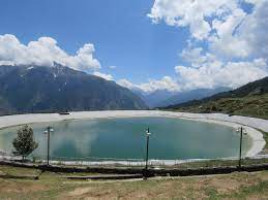
Chenab Lake
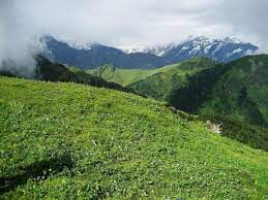
Gurso Bugyal
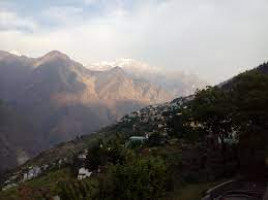
Joshimath

Kwani Bugyal
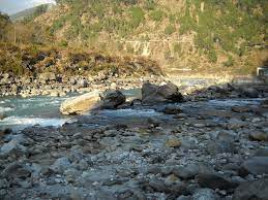
Nandaprayag
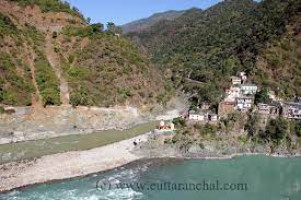
Rudraprayag

Skiing

Trekking

Trishul Peak

View Points
Per Person
11,000
*EXCLUDING APPLICABLE TAXES 4.1 Ratings
( 56 Reviews )
( 56 Reviews )
Per Person
19,900
*EXCLUDING APPLICABLE TAXES 4.1 Ratings
( 56 Reviews )
( 56 Reviews )
Per Person
15,680
*EXCLUDING APPLICABLE TAXES Per Person
30,250
*EXCLUDING APPLICABLE TAXES 4.1 Ratings
( 56 Reviews )
( 56 Reviews )
Per Person
15,999
*EXCLUDING APPLICABLE TAXES 4.3 Ratings
( 218 Reviews )
( 218 Reviews )
Total
35,000
*EXCLUDING APPLICABLE TAXES Per Person
11,000
*EXCLUDING APPLICABLE TAXES 4.1 Ratings
( 56 Reviews )
( 56 Reviews )
Per Person
5,000
*EXCLUDING APPLICABLE TAXES 4.6 Ratings
( 171 Reviews )
( 171 Reviews )
Per Person
20,340
*EXCLUDING APPLICABLE TAXES Per Person
22,500
*EXCLUDING APPLICABLE TAXES 5.0 Ratings
( 290 Reviews )
( 290 Reviews )
The trek to Hemkund Sahib
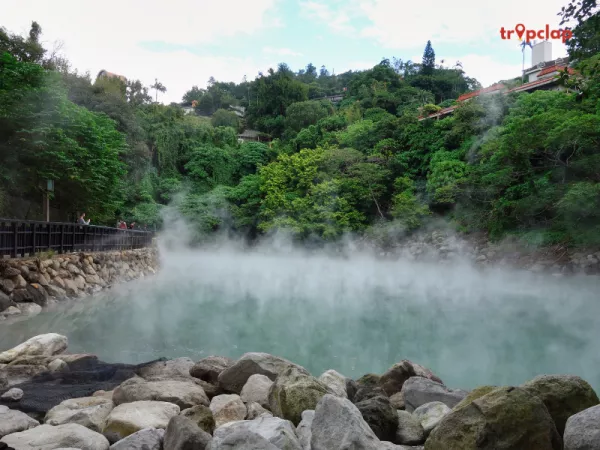 View Gallery - 4
View Gallery - 4 The trek to Hemkund Sahib is a challenging yet rewarding experience for those who are physically fit and love adventure. The trek begins from the small town of Govindghat, which is located at an altitude of 1,828 meters above sea level. From Govindghat, visitors have to trek about 19 kilometers to reach the gurudwara at Hemkund Sahib, which is located at an altitude of 4,329 meters above sea level.
Here is a brief description of the trek:
Day 1: Govindghat to Ghangaria - The first day of the trek involves a 14-kilometer trek from Govindghat to Ghangaria. The trek follows the path of the Alaknanda River and takes visitors through dense forests and beautiful waterfalls. Ghangaria is a small village located at an altitude of 3,050 meters above sea level and serves as the base camp for the trek to Hemkund Sahib.
Day 2: Ghangaria to Hemkund Sahib - The second day of the trek involves a 5-kilometer trek from Ghangaria to Hemkund Sahib. The trek is steep and challenging, but the breathtaking views of the surrounding mountains and the Hemkund Lake make it all worthwhile. Visitors can spend some time at the gurudwara, which is a place of peace and tranquility, before returning to Ghangaria.
Day 3: Ghangaria to Govindghat - The third day of the trek is the return journey from Ghangaria to Govindghat. Visitors can take their time and enjoy the beautiful scenery on the way back.
The best time to trek to Hemkund Sahib is from May to October.
Opening date for Hemkund Sahib Gate in 2024:
The Opening date for Gurudwara Hemkund Sahib in 2023 is 25th May to 10th Oct 2024
Places to visit in Uttarakhand
Per Person
19,429
*EXCLUDING APPLICABLE TAXES 4.8 Ratings
( 95 Reviews )
( 95 Reviews )
Per Person
16,000
*EXCLUDING APPLICABLE TAXES 5.0 Ratings
( 157 Reviews )
( 157 Reviews )
Per Person
20,000
*EXCLUDING APPLICABLE TAXES 5.0 Ratings
( 157 Reviews )
( 157 Reviews )
Per Person
67,890
*EXCLUDING APPLICABLE TAXES 4.3 Ratings
( 218 Reviews )
( 218 Reviews )
Total
31,000
*EXCLUDING APPLICABLE TAXES 4.1 Ratings
( 56 Reviews )
( 56 Reviews )
Per Person
25,000
*EXCLUDING APPLICABLE TAXES 4.1 Ratings
( 56 Reviews )
( 56 Reviews )
Per Person
11,000
*EXCLUDING APPLICABLE TAXES 4.1 Ratings
( 56 Reviews )
( 56 Reviews )
Per Person
15,650
*EXCLUDING APPLICABLE TAXES 4.1 Ratings
( 56 Reviews )
( 56 Reviews )
Per Person
37,200
*EXCLUDING APPLICABLE TAXES 5.0 Ratings
( 21 Reviews )
( 21 Reviews )
Per Person
21,000
*EXCLUDING APPLICABLE TAXES 4.1 Ratings
( 56 Reviews )
( 56 Reviews )
How to get there
 View Gallery - 4
View Gallery - 4 Getting to Hemkund Sahib involves multiple modes of transportation, and the final leg of the journey requires trekking.
Here is a brief guide on how to get to Hemkund Sahib:
By Air: The nearest airport to Hemkund Sahib is Jolly Grant Airport in Dehradun, which is approximately 292 kilometers away. From Dehradun, visitors can take a taxi or bus to reach the town of Govindghat, which is the starting point of the trek to Hemkund Sahib.
By Train: The nearest railway station to Hemkund Sahib is Rishikesh Railway Station, which is approximately 273 kilometers away. From Rishikesh, visitors can take a taxi or bus to reach Govindghat.
By Road: Govindghat is well connected by road to major cities in the region, including Rishikesh, Haridwar, and Dehradun. Visitors can take a taxi or bus to reach Govindghat.
From Govindghat: The final leg of the journey to Hemkund Sahib involves trekking for about 19 kilometers from Govindghat to Ghangaria. The trek is challenging and takes about 6-8 hours to complete. From Ghangaria, visitors have to trek an additional 5 kilometers to reach Hemkund Sahib.

Debalina Deb Roy
A seasoned travel writer with a passion for exploring off beat destinations and uncovering the hidden gems. My ultimate goal is to inspire people to step out of their comfort zones and explore the world.
Explore best popularTour Packages
Frequenty Asked Questions
1. What is Hemkund Sahib?
Hemkund Sahib is a revered Sikh pilgrimage site located in the Chamoli district of Uttarakhand, India. It is dedicated to Guru Gobind Singh, the tenth Sikh Guru.
The gurdwara is situated at an altitude of 4,632 meters (15,197 feet) and is known for its breathtaking surroundings, including a glacial lake.
2. How can I reach Hemkund Sahib?
To reach Hemkund Sahib, travelers typically start from the town of Govindghat. From there, it's a 19 km trek via Ghangaria. The trek is divided into two stages: Govindghat to Ghangaria (13 km) and Ghangaria to Hemkund Sahib (6 km). Ponies and helicopter services are available for part of the journey.
3. When is the best time to visit Hemkund Sahib?
The best time to visit Hemkund Sahib is from late May to early October. The gurdwara remains closed during the winter months due to heavy snowfall. June to September offers pleasant weather and clear skies, making it ideal for trekking.
4. What should I carry for the trek?
- For the trek to Hemkund Sahib, it is advisable to carry:
- Warm clothing (as temperatures can drop significantly)
- Sturdy trekking shoes
- Rain gear (weather can be unpredictable)
- Essential medications and a first aid kit
- Water bottles and snacks
- A good quality backpack
- Identification documents
5. Is the trek to Hemkund Sahib difficult?
The trek to Hemkund Sahib is considered moderate to difficult. It involves steep ascents and high altitudes, which can be challenging for some. Trekkers should be in good physical condition and may need to acclimatize to the altitude.
6. What are the main attractions near Hemkund Sahib? Nearby attractions include:
Valley of Flowers: A UNESCO World Heritage site known for its stunning meadows filled with diverse flora.
Ghangaria: The base camp for the trek to Hemkund Sahib and Valley of Flowers.
Lakshman Temple: Located near Hemkund Sahib, it is believed to be the meditation site of Lord Lakshman.
7. Are there any specific religious practices or rituals to follow?
Visitors are expected to cover their heads and remove their shoes before entering the gurdwara. Respectful attire and behavior are essential. Participation in community services and langar (community kitchen) is encouraged.
8. Is there any permit required to visit Hemkund Sahib?
No special permit is required to visit Hemkund Sahib itself, but if you plan to visit the Valley of Flowers, an entry permit from the forest department is necessary.
9. Can I find food and water during the trek?
Yes, there are several dhabas (small eateries) along the trek route where you can find basic meals and refreshments. Additionally, the gurudwaras offer free meals to pilgrims.
10. Are there any health precautions to consider?
Due to the high altitude, some travelers may experience altitude sickness. It is advisable to ascend slowly, stay hydrated, and consult a doctor if you have any pre-existing health conditions before attempting the trek.
Tripclap connects you with top travel agents
Compare Custom Quotes and get the best package deal
1
Trusted Network Of 8000+ Agents.
2
Book everything together, including stay & transport.
3
Compare agent profiles & verified reviews.
How It Works
Compare Custom Quotes from Top Travel Agents.

Tell us about your trip

Get Custom quotes from top agents.

Choose the package you like
Certified
We accept (more)
Members of
Media Recognition
Trusted Partners
Award
Copyrights © TripClap. All Rights Reserved


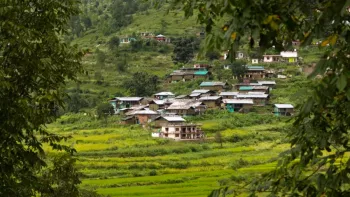

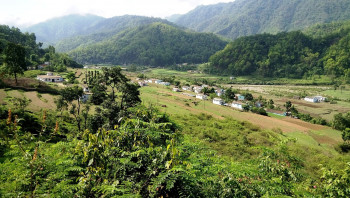
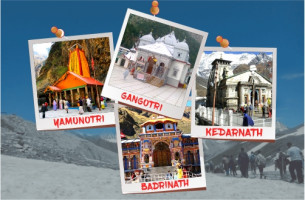


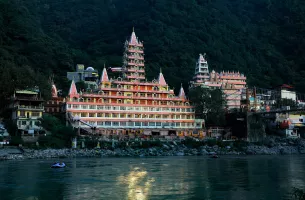
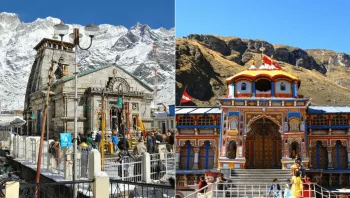




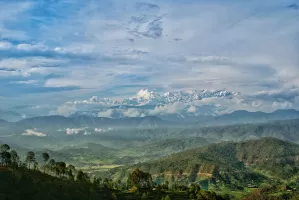
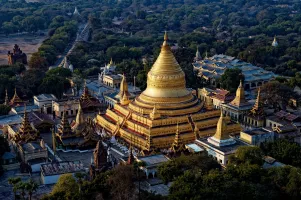

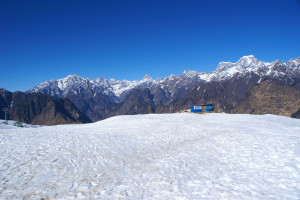

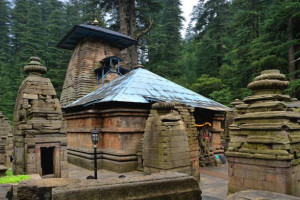
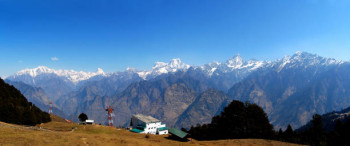
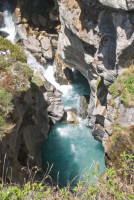
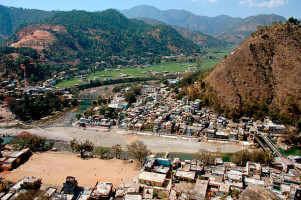


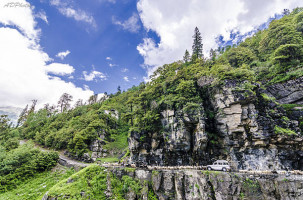
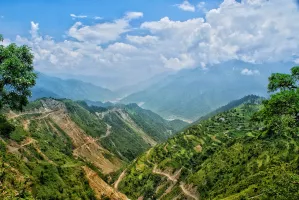


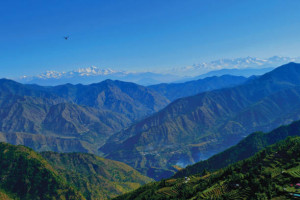

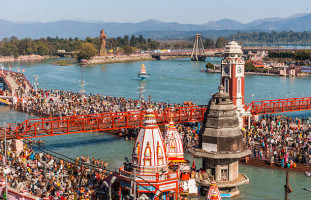
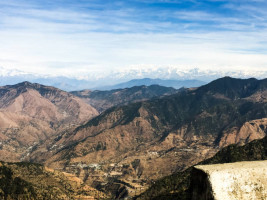
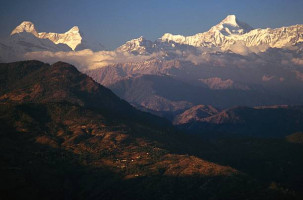
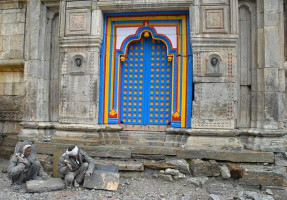
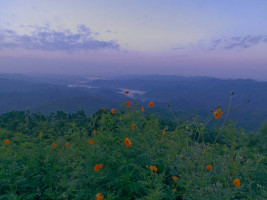
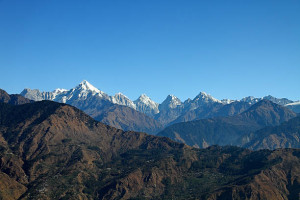


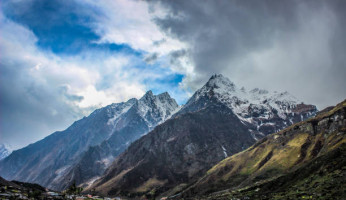
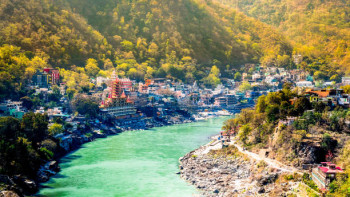




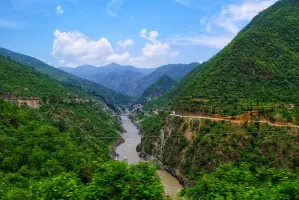
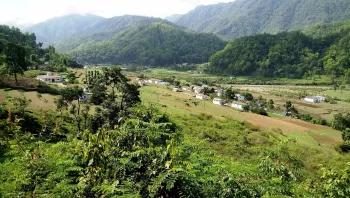
 May
May June
June July
July August
August September
September October
October November
November December
December January
January February
February March
March April
April

